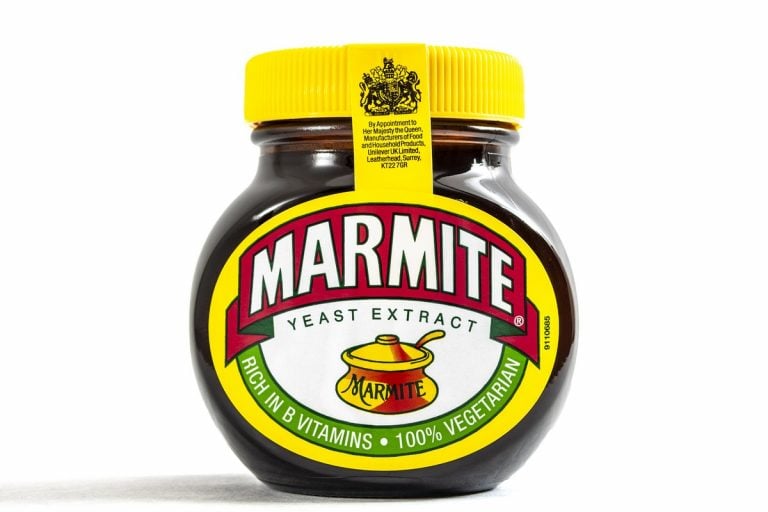What is Marmite?
Love it or hate it. It's with this famous slogan that Marmite has become famous throughout the UK and beyond. And the reason is obvious: we are talking about one of the most controversial products ever, capable more than any other of polarizing the opinion of consumers between admirers and detractors, one of those foods that can split diners at the table in two factions: pro and con. It's probably one of the first flavours that comes to mind to anyone who's spent a long time in England, a memory that is not always positive. In fact, the taste of Marmite, the spread of brewer's yeast extract, is particular, impossible to describe: intense, pungent, a concentrate of umami that can surprise an unprepared palate (it's often used at breakfast, spread on a slice of buttered toast: be careful not to confuse it with jam or chocolate, though!)
How Marmite came to be
With its sticky consistency and dark colour, Marmite was discovered by chance by a German scientist, Justus Liebig, who at the end of the 19th century accidentally concentrated brewer's yeast, only to realize that it could be edible. The first company to produce it, however, was the British Marmite Food Company, founded in 1902 in Burton-upon-Trent, in Staffordshire county, and which bought yeast directly from the many breweries around town. Initially, the spread was stored in clay pots shaped like a saucepan, called "marmite" in French. From the 1920s the sale began in the now iconic stubby glass jars, with the yellow and red label still present today that reproduces the image of a saucepan.
Vegemite, the Australian version of Marmite
An equally popular Australian cousin is Vegemite, a registered trademark of Kraft, the largest food company in North America and the second largest in the world, just after Nestlé. Australians call it "our national food," and for years they have called it the country’s cultural icon. It was conceived by Fred Walker, an Australian manufacturer who, after being struck by the particular taste of the British spread, in 1922 asked chemist Cyril Callister to make a similar product. Initially viewed with distrust by consumers, the sauce began to garner favour with the public around the 1930s, when Walker granted Kraft all the rights to the product, thus leveraging an already known and popular brand. So much so that it became, during World War II, one of the most consumed foods among the troops.
Marmite fans
Never was a marketing strategy more successful than the one for Marmite: in the world there are huge fans and bitter enemies. The first group includes Tracy Matthews, a woman from Cardiff, Wales, who considers herself the greatest Marmite admirer in the world: she has a sui generis collection of cans, advertising signs, posters and themed images, which she has collected in an ironic Facebook page called The Marmite Museum, her "homage to the dark elixir." For her Marmite is "the best thing that could ever happen to a slice of bread," but could prove to be a nightmare for many others. Tip: it's better to taste it in small quantities on well-buttered toast, while the bravest can try to use it - with caution - even in the kitchen, especially in sauces to accompany meats and robust dishes.
by Michela Becchi


 Why not every trattoria should be written about
Why not every trattoria should be written about Brigitte Bardot’s final rosé: the wine that marks the end of an icon
Brigitte Bardot’s final rosé: the wine that marks the end of an icon What you need to know about Italy's new decree on dealcoholised wine
What you need to know about Italy's new decree on dealcoholised wine Why Arillo in Terrabianca's organic approach is paying off
Why Arillo in Terrabianca's organic approach is paying off





